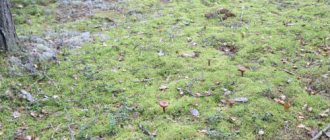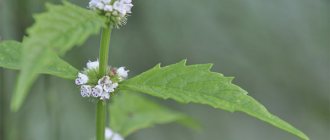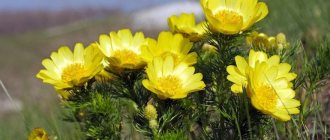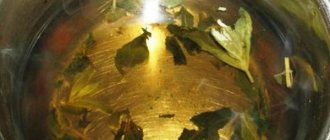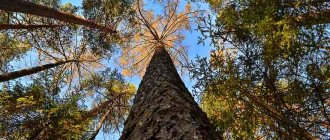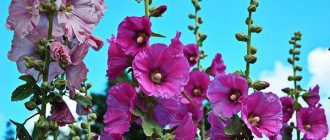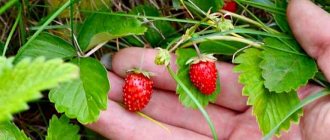Description of the reed plant
A perennial herbaceous plant, reed can reach two meters in height. For example, lake reed grows along the banks of rivers, lakes, and also reservoirs. The stems of the plant are cylindrical in shape, the leaves are sparse, elongated and narrow. Perennial forms are usually rhizomatous. During the flowering period of the reed, which is usually in June-July, panicle-shaped flowers appear on the stems of the plant. The rhizomes of the seaside tuber reed (Bolboschoenus maritimus) have large tuberous structures up to 3.5 cm long and 2.5 cm wide.
Home care
Can I keep it at home?
However, there are other opinions about reeds. For example, the inhabitants of Ancient Egypt associated this plant with power, because it grew only near bodies of water, which were of great value for an arid country. And dry reeds placed near the entrance to the home helped scare away ill-wishers.
From a medical point of view, marsh reeds can be dangerous after fading , as they begin to disintegrate into tiny fluff, which can trigger allergic reactions. In addition, reeds brought from the swamp may bear traces of the vital activity of various animals that are carriers of dangerous diseases.
Trimming
Reed is an unpretentious plant , but it is prone to very rapid growth , and therefore requires regular pruning with pruners to form a beautiful shape.
Pruning is best done in late autumn. Both overgrown roots and wilted leaves are pruned.
Watering
Since reed is a marsh plant, it loves humidity very much . In this regard, it is recommended to water it abundantly.
In the cold season, watering the reeds is slightly reduced, but the top layer of soil in which this representative of the flora grows should not be allowed to dry out. For irrigation you should use settled soft water . Once every three days, reed leaves must be irrigated with water.
Read also: How to wash a spray foam gun video
Landing
It is usually planted on a swampy bank or directly into the reservoir itself. Types of reeds with stems covered with leaves are immersed in water by twenty centimeters when planting, and reeds with bare stems - by a meter.
Transfer
Reeds are characterized by rapid aging and shedding of leaves . For this reason, the plant requires replanting every spring.
During transplantation, the reeds are separated and yellowed leaves are removed.
IMPORTANT! You should not divide the reeds into too many parts, since weak roots on small bushes may not take root.
Temperature
In summer, the most favorable temperature for reeds is considered to be a temperature not exceeding twenty degrees Celsius, and in winter it is necessary to ensure that it does not fall below eight degrees. Although reed is a cold-resistant plant that can withstand temperatures of five degrees above zero, it still prefers warmth.
Lighting
The reed will feel most comfortable in illuminated areas, but it does not tolerate direct sunlight. The most favorable place for it is considered partial shade.
Growing from seeds at home
The process of growing reeds from seeds is quite labor-intensive.
The seeds must first be wet stratified at low temperatures above freezing for two months. It is best to plant them in February or March.
The seeds are distributed over the surface of moist soil, consisting of a mixture of sand, peat and humus in equal parts. To maintain soil and air moisture, it is recommended to cover the seed container with glass and place it on a tray filled with water.
After five to seven days, you will notice the emergence of seedlings, which will need to be pruned after a couple of months. In June, young reeds must be planted in a permanent place.
Reproduction
Since when reeds are propagated by seeds, their varietal characteristics are lost, these plants are most often propagated by dividing the root system. One bush can be divided into seven parts using pruners, each of which must have at least one bud and developed roots.
The parts obtained as a result of division are immediately planted in the ground. The distance between them should be at least forty centimeters.
Bloom
The flowering period of reeds begins at the end of June or early July.
Small panicle-shaped flowers form on its stems, which then turn into a brown tassel.
Ground, soil
Reeds will feel best in moist neutral or slightly acidic soil , the pH level of which is from 5.0 to 7.0.
The soil can consist of two parts turf, one part humus or leaf soil, and one part sand. Reed grows well in hydroponics.
Fertilizer
Reeds must be fed with mineral fertilizers , the proportion of which should be one gram per meter. Most often, compost, humus or wood ash are added to the soil. In moderate quantities, it is allowed to feed the reeds with potassium salt and superphosphate.
In the first months of spring, it is recommended to enrich the soil with urea, and in order for the plant to grow and develop properly, it must be fed every month with fertilizers that do not contain calcium.
Description of the reed plant
About 300 species are known, distributed throughout the globe, but mainly in temperate and subtropical zones. About 20 species are found in Russia. Perennial, less often annual plants with or without creeping or shortened rhizomes. The stems are almost cylindrical or triangular, leafy, sometimes the leaves are only scale-like.
The inflorescence is multi-spikelet, branched or of several spikelets or single-spikelet. Spikelets are multi-flowered. The flowers are bisexual; perianth with few setae or absent. The flowers are small, greenish, collected in corymbose-paniculate inflorescences up to 10 cm long, bloom in June-July. The fruit is flat-convex or rounded triangular.
Reed reproduces both vegetatively (by rhizomes) and by seeds. Plant seeds are able to germinate in soil over a wide range of humidity - from 30 to 60-80% of total moisture capacity. During the growing season, reeds are capable of developing a powerful above-ground part with 8-10 shoots (80-250 fruit-nuts are formed on each shoot), as well as an underground part (stolons up to 120 cm long with 20 or more tubers). Stolons have from 3 to 7 buds on their surface, from which above-ground and underground shoots appear. The growth of tubers occurs most intensively in a soil layer of 10 cm. Their growth decreases with depth, and from a depth of 30 cm they are not able to produce seedlings. Dried tubers on the soil surface, or tubers exposed to low temperatures, lose their ability to germinate in winter.
Botanical characteristics of the plant, photo of reeds
Reed is a herbaceous perennial belonging to the genus Reed and the sedge family, and includes 52 species. This is a coastal plant, reaching a height of a meter or more.
It is endowed with a horizontally located long root, triangular cylindrical stems, wide-linear spreading three-row leaves narrowed to a triangular tip, bisexual small inconspicuous flowers collected in spikelets, forming complex spreading inflorescences.
The fruits of the reed are triangular nuts. The plant begins to bloom at the beginning of summer. As a rule, it grows in moist places, swamps, ditches, and the banks of reservoirs.
Collection and preparation of medicinal raw materials
The leaves and rhizomes of the plant in question are used for medicinal purposes. The best time to harvest foliage is the beginning of summer. You can collect raw materials until the end of the summer period. Next, the leaves are laid out in a thin layer on a tray and dried in a room with good ventilation or in the fresh air in the shade.
As for harvesting roots, it is recommended to do it at the beginning of the autumn period. The raw materials are dug up, washed, cut into small pieces and dried in a dryer at a temperature of 40-50 degrees.
The blanks are poured into paper bags and stored in a room with sufficient ventilation. Shelf life - two years, no more.
Medicinal properties and composition of reeds
It is not for nothing that the plant is widely used in informal medicine. It is rich in valuable nutrients. It contains a lot:
- vitamin C;
- proteins;
- carbohydrates;
- starch;
- tannins;
- glycerin;
- sugars;
- lactic acid.
Preparations from the plant have powerful medicinal properties - anti-inflammatory, antiseptic, diaphoretic, astringent, bactericidal, diuretic, antiscorbutic, emollient, wound-healing, antifever, hemostatic effect.
Medicines based on reeds help:
- rapid healing of wounds and burns;
- decrease in temperature;
- improving kidney function;
- eliminating swelling;
- strengthening the immune system;
- normalization of blood glucose levels;
- therapy of diabetes, enteritis, dysentery, gastritis, diarrhea, insomnia, colitis.
Time-tested drug recipes
There are a considerable number of effective and efficient means for the treatment of various pathologies. However, you should not take them thoughtlessly, or especially without consulting your doctor, because this can harm you and cause your condition to worsen.
Remember, drugs from the public are only an addition to the main treatment prescribed by the doctor. Moreover, their use must be appropriate and reasonable.
1. Preparing a homemade medicine that helps strengthen the immune system. Clean the reed rhizomes, about a kilogram, chop them, and put them in a saucepan. Next, you need to pour boiled water over the raw material and simmer over low heat for an hour, then drain the liquid into a separate container, and pour the roots again with water and boil. After an hour, combine both liquids and boil. It is recommended to use 200 ml of strained medicine once a day. This composition has powerful immunostimulating properties and is suitable for both children and adults.
2. Cardiac dyspnea: use of tea. During the period of intensive flowering of reeds - in September, collect its flowers, pour them into a glass container and steam with 300 ml of boiling water. After an hour, start taking five sips of the filtered drug every four hours. The duration of the course is 30 days.
3. A remedy for the prevention of heart pain. Steam several dried inflorescences of the plant with a liter of just boiled water. Add a few mint leaves to the reeds and set aside for two hours. Drink 20 ml of the strained mixture several times a day.
Read also: How to make a pie from frozen yeast dough
4. Colitis: decoction therapy. Brew dry, finely chopped plant roots in an amount of 15 grams with boiling water - 200 ml. Simmer a little over low heat, cool, filter. It is recommended to take a spoonful of the drug at least five times a day.
5. Diabetes: use of an effective drug. Steam a spoonful of dried, crushed plants (stems, roots) in three hundred milliliters of boiled water. Boil, leave to brew. Drink a quarter glass of filtered drink three times a day. The duration of the course is three weeks.
6. Preparation of a diuretic composition. Pour 50 g of finely chopped leaves and reed stems into a thermos. Pour boiling water over the raw materials. After an hour, filter and start taking 200 ml of the drink three times a day. An effective remedy that has powerful diaphoretic and diuretic properties and helps normalize kidney function and reduce swelling.
Who are reed-based medications contraindicated for?
No special contraindications to the use of plants have been identified. However, in order to prevent side effects or poisoning, before using any reed-based product, consult your doctor.
It is not recommended to use the plant for medicinal purposes if you have gout or varicose veins. It is not advisable for pregnant and breastfeeding women to drink reed-based products. Long-term use may cause constipation. You cannot treat children of any age with plant preparations.
What kind of plant is this? Reed is a herbaceous plant (grass) that belongs to the sedge family.
Swamp reed belongs to the genus Reed (Scirpus), which contains about three hundred varieties of annual and perennial plants.
This plant can mainly be found in the wild, but it is also grown for the purpose of landscaping artificial reservoirs in summer cottages .
You can visually get acquainted with Lake Kamysh in the photo below:
Reeds are often mistakenly called other plants , in particular cattails and reeds, although these are plants from other families.
Homeland of the plant
Reeds can be found in almost every corner of the earth, but they are most widespread in tropical and subtropical latitudes.
They choose ponds and swamps as their habitat. Some types of reeds float on the water surface.
Stem
The length of the reed stem usually reaches three meters. The stem of the reed is thin. It is characterized by a cylindrical or triangular shape .
On the cross section of the stem you can see voids that act as air passages.
The triangular stems may be covered with linear leaves that are similar in shape to sedge leaves. The cylindrical stems usually do not have leaves, but scales up to three millimeters long can be located at their base. Some types of reeds are equipped with thread-like leaves that form a basal rosette.
Root
The underground part of this representative of the sedge family is represented by a rhizome, which can be creeping or shortened.
Fruit (panicle)
In mid-summer, inflorescences in the form of spikes form on the tops of the reed stems, connected into an umbrella, panicle or head up to ten centimeters in size.
Sometimes you can see a solitary ear on the reeds. The spikelets include several bisexual flowers of a light greenish color, which begin to turn brown towards the end of the flowering period.
Some varieties of reeds are equipped with a bract leaf, which is positioned as if it were an extension of the stem. Sometimes this leaf is thin and awl-shaped, resembling a film.
The fruit of the reed is a triangular or flat-convex nut.
Types of reeds
Sea reed (Scirpus maritimus) is a perennial with a creeping rhizome, stems 50-100 cm high and linear leaves 3-8 mm wide. At the top of the shoot there is a dense, star-shaped, umbrella-shaped inflorescence of brown color. Can be used for landscaping areas with saline soil.
Lake reed (Scirpus lacustris, Shoenoplectus lacustris) is a perennial herbaceous plant from the sedge family. It is easy to distinguish from reeds and cattails. If the cattail has long leaves and dark brown ears at the tops, consisting of compressed fluffs, and the reed has narrower and longer leaves, as well as a panicle of flowers at the end of a long stem, then the reed stands in the water in the form of a tall (up to 1-2 m) a round twig without panicles and cobs. Only at the end of July a small cluster of spiny brown spikelets appears at the top of the smooth stem. Reeds are used as fuel, for livestock feed, for the manufacture of roofs, mats, carpets, paper, for the production of alcohol, tannins, lactic acid and glycerin.
Bristle reed (Scirpus setaceus) - In damp sandy places, mostly along the banks of reservoirs in the warm-temperate and subtropical zones of Europe, the Caucasus, southwestern Siberia, Central and Western Asia to India. Annual plants 3-20 cm tall. The stems are numerous, thin, with very narrow leaves. Spikelets number 1-4, small, collected in a bunch at the top of the stem. The bract is one, longer than the inflorescence. Covering scales are dark purple, with a wide green stripe. Blooms in late spring.
Forest rush (Scirpus sylvaticus) - Despite its name, forest rush is the least commonly found in the forest. But in swamps, on overgrown lakes, ponds, on the muddy banks of rivers and reservoirs, this is the most common plant. You can also find isolated clumps of reeds in damp meadows - in depressions where water stagnates for a long time. A perennial plant about a meter high with a creeping rhizome. At the top of the stem there is a lush panicle of small greenish spikelets. The stem is triangular, from the base to the inflorescence itself, covered with alternate leaves. The leaves of the forest reed are long, linear, and rough along the edges. Blooms in June-July.
Tabernaemontana reed (Scirpus tabernaemontani) - Similar to S. lacustris; It is distinguished by reddish-brown covering scales of spikelets, covered with numerous purple small warts. In water (especially saline) and along the banks of lakes and rivers, in oxbow lakes from the Mediterranean region to the cold-temperate zone of Eurasia. The species is named after the 16th century German botanist. D. Müller (J. T. MSH-1er), who wrote under the pseudonym “Tabernaemontanus”. The culture commonly used is S. tabernaemontani var. zebrina hort. (S. zebrinus hort.) with yellowish-white stripes on the stem.
Rooting rush (Scirpus radicans) - In early spring, the leaves and stem of this species are brownish-reddish in color, later turning green. The barren stems of this reed look unusual and attractive; they lengthen and, bending in an arc, touch the water, where they form a new plant.
Use of reeds
Reeds are usually used in natural style gardens. They can be used to create plant compositions in shallow water bodies, where water lilies, egg capsules and other plants floating on the surface of the water look especially impressive against their background. Some species are suitable for shady gardens. Thickets of reeds sometimes surround a pond like an impenetrable wall. Imagine such a two-meter hedge! The wind sways the spreading inflorescences and transfers pollen from one plant to another. Thanks to the rapid growth of rhizomes, reeds successfully colonize stagnant bodies of water. Its thickets reduce water pollution.
Article on the topic: Crested lice - beneficial properties, description
The rhizomes contain a lot of starch. In the old days, flour was made from dry rhizomes. It was added to rye flour when baking bread. Reed stems are used to weave rugs and light shopping bags. A sprig of reeds looks good in a dry winter bouquet. Birds feed on the fruits of the reed.
The chemical composition of reeds has not been sufficiently studied. The rhizome of the reed is considered edible. In spring and autumn it contains a lot of starch and sugars. If you grind the rhizome in a meat grinder and cook for 40-50 minutes, you will get a sweet decoction. By boiling the broth over low heat, you can get a thick and even sweeter syrup. The root part of young plants is used to season potato, cereal and meat soups.
From the dried rhizome you can get flour and bake bread. Even in camping conditions, you can cook a delicious lunch by the fire if you bake the rhizome over coals or in ash. In spring, the white basal part of the stem is also edible. It tastes juicy and sweet. Many hunters, fishermen and tourists are well aware of the nutritional value of reeds and use them for food. If we talk about people who find themselves in extreme conditions, then they are not in danger of starvation when there are reeds nearby.
Fish also like reeds. To attract fish such as carp and carp to the fishing spot, just cut a few branches and carefully place them in the water. Freshly cut reeds release juice, which these fish like. The fish not only loves to eat small shoots of reeds, but also actively lives in these thickets, from time to time revealing itself with characteristic splashes.
Mats and rugs are woven from reeds, and in the southern part of Russia, by mixing it with clay, a cheap building material is obtained, which is used to coat frame walls (hence the name of such buildings - huts).
Bulrush
Perennial, with a hollow creeping rhizome. The stems can be from 50 cm to 2.5 m in height, green in color. The shape of the stems is cylindrical, they are covered with scale-like leaves of a reddish or dark brown hue, which are found at the base. The upper basal leaves are also scale-like and have an awl-shaped plate. The plant may develop ribbon-like submerged leaves if it grows in fast-flowing rivers.
The inflorescence is thyroid-paniculate, with oblong brown spikelets, total length no more than 10 mm. The flowers have three stigmas. Flowering time occurs at the end of spring and beginning of summer. The fruit has the shape of a convex triangular nut, the length of which is 2-3 mm. The fruits appear in July-August.
This species is found in Siberia and grows throughout European Russia, including the Caucasus. Lake reed grows even in Central Asia and North America, if favorable conditions contribute to it.
Growing
This species is completely undemanding to growing conditions. The only and most important thing this plant needs is constantly moist soil. In dry soil it dies immediately. Grows well in neutral or slightly acidic soil and in good light.
In nature, it reproduces by seeds or division of rhizomes. If reeds are planted specifically as an ornamental crop, care should be taken to ensure that they do not grow too much, which is typical for this plant. It is customary to cut off the stems for the winter.
Article on the topic: Adam's root - useful properties, description
Application
This type has found its application in landscape design . It is used for decorative purposes to decorate small reservoirs, since the thickets of this plant look quite impressive, like a living two-meter hedge.
Lake reed is popularly called kuga. That is why a woven mat made from it is called a kugovik. Previously, light floats for fishing were made from kuga.
This plant is held in high regard by beekeepers. Because during its flowering, bees collect beebread from it, which is necessary for feeding the babies of the bee family.
The rhizome of this plant is suitable for use as food; it contains a lot of starch and sugars. In ancient times, flour was obtained from it, which was added to rye flour for baking bread.
It is also used in pharmacology and folk medicine. The rhizome and aerial parts contain substances that are added to drugs that have a therapeutic effect.
Cattail and reed - what's the difference?
Both plants love water and are often used for decorative purposes. Not knowing the difference between cattail and reed, many naively believe that this is the same botanical species at different periods of its development.
In fact, this is not true. The specimens differ from each other not only in a number of external characteristics, but also belong to different families. Let's look at cattail and reed, what is the difference between them and what they are, in order to get rid of the eternal confusion with their names.
Agricultural technology for growing reeds near ponds in personal plots
- Choosing a location. Reed loves sunny places, less often shaded places are preferred by forest reed;
- The soil. The soil for planting should have a pH of 5.0-7.0, i.e. be neutral or slightly acidic. Definitely raw. Forest reed is planted to a depth of no more than 20 cm, since it has leaves, and lake reed can be buried when planted to a depth of 1 meter;
- Attitude to frost. Forest and lake reeds are winter-hardy species and therefore do not cover them for the winter. However, decorative forms of lake reed are recommended to be grown in containers and stored during the cold season in a room suitable for storing ornamental plants.
Cattail and reed: difference and main differences
The first plant is more noticeable due to its velvety brown candles or “horns”, while the second is a less noticeable tall grass. The correct answer to the question, cattail and reed - what is the difference, is that the plant with a long brown horn at the end is a cattail, and the second one on top does not have it (Figure 1).
Figure 1. In the photo on the left - cattails, on the right - thickets of reeds
The difference between cattail and reed is almost obvious. The first has a tall, large stem with a tight cob on top, which contains seeds; as they ripen, the cob collapses and loses its density, fluffs and seeds fly out of it, leaving a bare stalk. The reed stem is triangular or round in cross section; on its crown there are inflorescences in the form of umbrellas or tassels, small heads.
If you look at the pictures of what reeds and cattails look like, the first thing you notice is their leaves:
- Long ribbons, partially immersed in water and stretching from the rhizome itself, belong to cattails - even if they are picked and dried, they will not lose their elasticity for a long time, their width directly depends on the species.
- In reed plants, the structure of the leaf also depends on the variety - in lake plants only bare stems are visible, which are covered with scales closer to their roots, while in forest plants they are similar to sedge plants.
The external difference between cattail and reed is very significant, but the latter is often confused with swamp reed, which is also completely wrong. A distinctive feature of the reed is a massive soft panicle at the end. The reed inflorescences are hard and prickly, while the cattail inflorescences scatter with seeds and soft fluff, after which they sprout at the bottom of the reservoir.
Despite all the differences, cattail and reed are considered very valuable plants:
- Their roots provide nutritious food for many animals, including livestock.
- From the rhizome you can also obtain flour, which is suitable for human food purposes.
- On the farm, both representatives of aquatic flora serve as excellent materials for making wickerwork.
Popular message topics
- Pollution of the hydrosphere
The hydrosphere is a water resource on earth, without which there would be no life on our planet. Water makes up seventy percent of our land. Thanks to the hydrosphere, the water cycle occurs on earth. - Pushkin Alexander Sergeevich
Every person hearing the name of Pushkin is pierced by the thought of the Russian national poet. It contains all the richness and beauty of the Russian language. We all live in a world of magnificent poetry, prose and fairy tales about a sympathetic and beautiful princess and an envious - Koala
Koala is a representative of the Australian fauna. Many people, when they look at them, imagine soft teddy bears, which both adults and children love so much. Many people think that they are similar to a bear, but koalas are truly
Description of cattail
It is a tall aquatic grass that forms the only genus of the family of the same name (Figure 2).
Figure 2. This is what cattail looks like
Based on the external description of the plant cattail and reed, the differences can be seen in the photo:
- It forms beautiful brown inflorescences at the tops of the stems.
- Its leaves are long and smooth - they grow up to 2 m, and do not have a central vein.
- Its generative shoots and rhizomes develop at a depth of 60-90 cm, so it is impossible to see them above water.
- Cattail roots contain a lot of starch and nutrients.
- It tolerates frost well and prefers slightly silted ponds, although it can also grow on sandy shores.
- This grass has about 20 species; in our country it is represented mainly by narrow-leaved and broad-leaved types.
To identify the difference between reed and cattail, it is worth taking into account the characteristic features of the latter. This is a perennial plant that blooms in June - at the beginning of flowering, thickenings in the form of scales appear on the tops of the stem. Then the flower buds begin to grow and thicken, increase in size, acquiring a bright yellow hue due to the pollen they contain. As the seeds develop and grow, the horn acquires a dark brown color and by autumn it becomes soft and velvety, scattering into fluff.
Article on the topic: Common clove - useful properties, description
Description of reeds
This resident of river banks belongs to the sedge family; among its representatives there are both annuals and perennials (Figure 3).
Based on the description of the species, the difference between reed and cattail is:
- The presence of different species - we have forest, lake and rooting reeds.
- Like reed, it is a cereal and has inconspicuous flowers; it reproduces vegetatively with the help of seeds carried by the wind and its powerful rhizomes.
- Lake and forest subspecies can be found not only near rivers and lakes, but also in flooded meadows and swamps.
Let's figure out how to distinguish reeds from cattails, according to their description. The fruits of the first are small panicles, while those of the second are prickly and have an irregular corymbose shape. Reed stems are bare, with an inflorescence-fruit at the top, and the leaves grow from under the water, almost separately from the stem itself. It does not exceed 2.5 m in height and is easily recognized by the lush green panicles on the tops of the shoots that appear in June.
Figure 3. Appearance of ordinary reeds
The rooting subspecies is remarkable in that, in addition to paniculate inflorescences, it has long stems creeping along the surface of moist soil, which then send roots into it and form a new plant.
Reed products
Thanks to the development of small businesses in Russia, new types of services, jobs and new goods appear.
So, if you have long had the idea of starting your own business, the following information should give you some guidance. One of the popular types of services is the production of custom-made products from reeds.
Since recently there has been a shift away from plastic and other similar artificial materials in favor of natural products.
Reed products as a business
What can reed products be in demand for?
Designers more often use interior items and decorations made from natural materials. In this case - reeds. Such products can be used to decorate bars, beauty salons, private cottages, and so on. In addition, there is an option when entire roofs, gazebos, and slabs are made from reeds. Of course, these are not products for interior decoration, but they are quite in demand for private businesses. In this case, it is necessary to purchase special equipment. The idea of a “reed” business implies more than one direction. You just have to turn on your imagination and adequately assess your own capabilities.
Any endeavor requires investment. If there are limitations on funds, you will have to take out a loan. Now banks are more willing to ease the conditions for providing loans to small businesses. All that remains is to choose the bank that will provide a loan on the most acceptable terms.
The next question is renting premises, where raw materials will be stored and manufacturing will take place, as well as storage of finished products. In Moscow, for example, commercial rental of premises will require a significant financial investment. The further you are from megacities, the cheaper and more accessible the rent is for those who want to own their own business.
The first concern will be finding suppliers of reeds. After all, not every reed is suitable for production. You can, accordingly, extract reeds on your own. If you do it manually, then you only need hand tools; if you do it on a large scale, you should purchase a special combine harvester or mower boat, which will cost about 400 thousand rubles.
Registering your own business as an individual entrepreneur will take you about a week of time and about 2 thousand rubles.
Next, you need to master the basic principles of manufacturing goods that are competitive in the market. Then, traditionally, advertising. Creating your own image, the face of the company. And also the question of selling products, one of the options could be your own specialized store, or you can sell through an already existing network of retail outlets, supermarkets, or an online store.
An important issue is also accounting. Either you contact an audit firm or hire an accountant. Another option is to master accounting yourself.
There are many ideas for starting your own business . Currently, products made from natural materials are in high demand. You just need to occupy this niche in the market in time.
What is the difference between reed and cattail?
Representatives of sedges and cattails are often confused with each other or classified as belonging to the same family (Figure 4).
The question of how reeds differ from cattails does not lose its relevance:
- Reed thickets reduce the pollution of water bodies, while cattail thickets lead to waterlogging.
- Overgrowths of lake grass are typical in shallow waters of ponds, oxbow lakes and rivers; the forest variety prefers swampy shores and forest swamps.
- Since ancient times, reeds have been used in households - they covered the roofs of village huts, and they wove rugs and bags from the shoots.
Figure 4. Plants can be distinguished by appearance
In addition to its use, it doesn’t hurt to know how reeds differ from cattails in appearance. It completely lacks leaves on its stems and does not have the characteristic brown ears. The inflorescences are collected in fluffy green panicles consisting of spikelets. Flowering occurs at the end of July - a small brush forms at the top of the smooth cylindrical rod.
Other distinctive properties that help to establish how reeds differ from cattails are:
- Nutritional characteristics - this is a cereal plant; its rhizomes contain a lot of starch and sugar.
- Wide scope of application - as biological fuel, livestock feed, material for crafts.
- In production, paper, roofs, mats and mats are made from it; flour is ground from dried roots and bread is baked.
- In survival conditions, you can make a salad from the root part of the white stem, fry its pieces over a fire, or eat them fresh, washing them thoroughly in water.
Why is cattail called reed?
Obviously, these are two different biological species, although the latter is often confused with a reed, the top of which is crowned with a fluffy panicle. But why is cattail called reed? The confusion most likely stems from the fact that both specimens grow on the banks of lakes and rivers, in close proximity to each other.
Another reason why cattails are called reeds has its roots in history. They were confused back in the 19th century, mistakenly classifying them as reeds or considering all three grasses to be one species in different phases of its development. In his explanatory dictionary, Vladimir Dal also mistakenly classified reeds as reeds, which he described in his article.
Despite the fact that we have found out what the difference is between reeds and cattails, and how significant it is, biological specimens grow in the same way - not only along the banks of reservoirs, but also in the water itself. They are perennials and renew themselves every spring, and their dying parts sink to the bottom, which leads to waterlogging of lakes. In addition, both species have become fashionable as garden and landscape plants and are used everywhere in decorating bouquets.
The author of the video talks about the unusual use of these aquatic plants, namely, their consumption as food.
Collection and procurement of raw materials
It is necessary to collect medicinal raw materials in environmentally friendly places. It is not recommended to collect reeds in bodies of water where animals bathe and birds live. The leaves are harvested in July and August, the roots are dug up in September and October, and the inflorescences are cut off during flowering.
Read also: Shelf life of chicken eggs according to Sanpin
It is best to dry in an electric dryer or oven. You can do this in the shade under a canopy. The finished raw materials are laid out in canvas bags, cardboard bags, and stored for no more than two years.
Have you used reeds to prepare medicines? We are waiting for your reviews, recommendations, proven recipes.
The Scirpus reed has a long history. It was used not only in informal medicine for the manufacture of medicines, but also in cooking, everyday life and plant growing. Previously, the plant was used as a durable lining (reed belt), which was laid along the entire perimeter of the foundation. In addition, rugs and shopping bags were made from the stems.
Today reeds are also widely used. Its roots are suitable for human consumption. In addition, the rhizome of the plant is used to make a coffee surrogate. Dried roots are an ideal raw material for making flour.
Forest reed (Scirpus sylvaticus L.)
A perennial herbaceous plant with long creeping rhizomes, thanks to which it forms extensive thickets. It has medicinal and economic significance. It exhibits pronounced medicinal properties, in particular anti-inflammatory, hemostatic, diuretic, antifever, etc.
Table of contents
In medicine
Forest reed is a non-pharmacopoeial plant and is not used in official medicine of the Russian Federation. However, due to the presence of some medicinal properties, it is used in folk medicine as an anti-inflammatory, diuretic, sedative and hypnotic.
Contraindications and side effects
Although there are no contraindications as such to the use of forest reed for medicinal purposes, consultation with a specialist is recommended to avoid side effects. The use of preparations based on forest reed is not recommended for people with gout and varicose veins, as well as for women during pregnancy and breastfeeding. In addition, prolonged use of reed can lead to constipation. The use of forest reed in any form is contraindicated for children.
In cooking
The rhizomes of forest reed are used in cooking. In tropical countries, it is consumed as food, and a coffee surrogate is also made from it. It is also known that dried reed rhizomes are used to make flour, which is mixed with rye or wheat and baked into baked goods.
In crop production
Forest reed is an undemanding plant; it takes root well in any damp area, has an attractive appearance, and can be bred for decorative purposes along with water lilies and egg capsules in a country pond. In addition, cut reeds (especially dried ones) are used in floral design when making dried flower arrangements.
In other areas
Forest reed is of economic importance. The stems are used for the manufacture of wickerwork, mats, rugs, shopping bags, for roofing, and also as packaging, thermal insulation and construction material.
Article on the topic: Mountain arnica - beneficial properties, description
Forest reeds also serve as food for cattle, especially young shoots - a favorite delicacy for deer.
In other areas
In the past, reeds were used to produce building materials, in particular reed concrete, based on cement or gypsum binders, mainly in rural construction.
The high content of pentasans determines the use of reeds to produce furfural, a valuable raw material for the production of plastics.
Classification
Forest reed (lat. Scirpus sylvaticus) - belongs to the genus Reed (lat. Scirpus), of the sedge family (lat. Cyperaceae). The genus includes over 250 species of perennial (less often annual) grasses, distributed throughout the globe, mainly in tropical and subtropical, as well as temperate regions of the Northern Hemisphere. In the former USSR there are about 25 species.
Botanical description
Forest reed is a herbaceous bright green plant, perennial, 30-130 cm (80-150) high with a horizontal long rhizome. The stems are triangular, almost cylindrical, with well-developed aerenchyma tissue. The leaves are broadly linear (1-2 cm wide), three-rowed, spreading, bifolded, gradually narrowing into a triangular tip, separated from the rest of the blade. The flowers are bisexual, protogynous, very small, inconspicuous, collected in ovoid spikelets 3-4 mm long, which in turn form a complex spreading paniculate-umbellate inflorescence. The spikelets are brought together at the ends of the inflorescence branches in groups of 2-5. Perianth of 6 setae. Stamens 3, style. Pistil of 1 column with 3 (2) thread-like stigmas. The fruit is a triangular nut. It propagates mainly by rhizomes and also by seeds. Blooms in June-August.
Spreading
Forest reed is widespread throughout European Russia. In the northern taiga it becomes very rare, but reaches the Arctic Circle. Prefers waterlogged places, in particular swamps, banks of reservoirs, marshy meadows, forests, bushes, ditches. Often forms extensive continuous thickets.
Procurement of raw materials
Forest reed leaves are harvested for medicinal purposes from early July to mid-August. For drying, the raw materials are laid out on a pallet in a well-ventilated place, possibly under a canopy. The rhizomes are carefully dug up in September - October, cut into small pieces, and dried in dryers at a temperature of 50 ° C. Dried raw materials are placed in cloth bags and stored for no more than 2 years.
Chemical composition
Forest reed stems contain up to 43.5% cellulose, 24% lignin, 22% pentasans, and protein – 9.87%. Protein (15.99%), fats (0.79%) and ascorbic acid were found in the leaves. During flowering and fruiting, the amount of protein drops to 3%. The fiber content also varies, from 38.11% to 42.7% at the fruit ripening stage. In inflorescences, the content of carbohydrates and starch is almost twice as high as in the stem, and cellulose is much lower. In the ash of the stem, SiO - 85.9%, K2O - 1.5%, CaO - 3.7%, SO - 1.8%, as well as a significant amount of silica were found.
Pharmacological properties
The medicinal effect of forest reed is due to the presence of useful substances in it, especially ascorbic acid. The plant has pronounced anti-inflammatory, hemostatic, antifever, diuretic, antiscorbutic, wound-healing, emollient, astringent, bactericidal, diaphoretic and antiseptic properties.
Use in folk medicine
In folk medicine, forest reed (stems, leaves, pollen, rhizomes) has found its use quite widely. Crushed fresh reed leaves are used as a hemostatic and wound healing agent to heal wounds. In folk medicine, reed fluff with ghee (in the form of an ointment) is used to quickly heal skin from burns. Herbalists recommend taking a decoction of reed leaves orally for diabetes, gastritis, enteritis, dysentery, bloody diarrhea, as well as for heavy menstrual flow, accompanied by pain, nausea or insomnia. Reed is also used as a preventive diuretic and diaphoretic, as well as to normalize kidney function, reduce swelling, and maintain blood sugar levels in diabetes mellitus. A decoction of the rhizome of forest reed is popularly used to treat colitis and as an immune-supporting agent. Reed inflorescences, brewed as tea, are used internally for heart pain and shortness of breath.
Historical reference
The use of reed and products made from it as a building material dates back centuries. Since ancient times, the peoples of Central Asia have used reeds in ganch-reed and drywall-reed (local gypsum) floors. Particularly in earthquake-prone areas, reeds were used as a durable liner (reed belts) laid around the entire perimeter of the foundation. The production and use of reed as a thermal insulation material in Russia, in particular in the Nizhny Novgorod province, began in 1908-1910, where the inventor of the first domestic reed press, F. L. Gogin, lived and worked. At the same time, reeds and straw began to be produced near Moscow and in the North Caucasus. In pre-revolutionary practice, reed and straw slabs were used mainly as thermal insulation material for railway cars. After the October Revolution, the first factory for the production of reed slabs was built in 1918 in the city of Krasnodar. During the Great Patriotic War and especially in the post-war period, there was a new rise in the production and use of reed products.
The scientific name of the genus Kamysh comes from Lat. “scirpea” – “braid”.
Folk recipes
As a diuretic: 3 tbsp. Pour 1 liter of boiling water over the crushed leaves and stems of reeds and let it brew for 1 hour. Take 1 glass orally 3-4 times a day. An excellent diuretic and diaphoretic that normalizes kidney function and reduces swelling of the body.
For the treatment of diabetes: 1 tsp. pour finely chopped reeds with 1 cup of boiling water and keep on high heat for about 2-3 minutes. Cool, strain and take a third of a glass 3 times a day. The course is about 20 days, depending on the blood sugar level. When the sugar level is normalized, it is necessary to reduce the consumption of the decoction to 0.5 cups per day. As a preventive measure, it is recommended to take it constantly to maintain normal blood sugar levels.
For the treatment of colitis: Dry the reed roots, chop them and 1 tbsp. pour a glass of boiling water, boil for 10 minutes, cool, strain. You need to take 1 tbsp before meals. this decoction 5-6 times a day until complete recovery.
For the treatment of cardiac dyspnea: In September, when the reed is in full bloom, you need to collect its inflorescences, brew it like regular tea and drink several (5-7) sips warm constantly, at intervals of 3-4 hours. 1 month of such treatment is enough for shortness of breath, even the most severe, to completely disappear. To prevent pain in the heart muscle, just brew two inflorescences in 1 liter of water, add a couple of mint leaves and let it brew. Drink continuously in small portions until the pain and discomfort in the heart muscle completely disappears.
Article on the topic: Yellow aconite - beneficial properties, description
Strengthening the immune system: Take 1 kg of peeled rhizomes, chop them and pour two liters of boiling water. Boil the reed roots for an hour, then pour the water into a separate bowl, pour another liter of boiling water over the roots and cook. Then combine both decoctions, boil for another 10 minutes under a closed lid and take 1 glass per day. This is an excellent immune-supporting remedy, and it is suitable for both adults and children.
